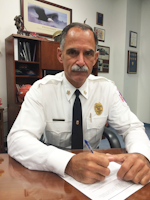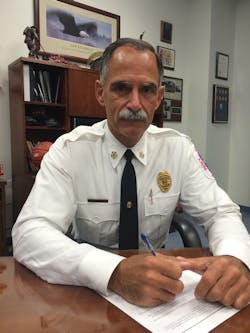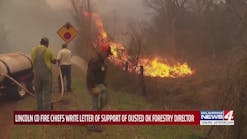The final days of March were rough for our firefighters. At the time of this writing, we have witnessed five firefighters die in three tragic line-of-duty-death (LODD) incidents. On March 22, 2018, two firefighters in York, PA, lost their lives in a structure fire—the department’s first LODD in 45 years. Less than 24 hours later, an FDNY firefighter met the same fate. Then on March 24, 2018, two more firefighters died in a fire engine crash in Kanawha County, WV; the commission president said it was the worst incident for their volunteer fire service.
Learning from tragedy
We bore witness as families grieved, and we all took time to mourn and reflect on these firefighters’ sacrifices. I hope we will also take time to reflect on the ripple effect of these firefighters’ lives and the ripples created by their deaths. We must ensure that these tragic situations are not merely times of passing, but also times of learning and progress. For these three jurisdictions, these incidents mark a crisis moment, likely a change in direction for each.
As the funerals and processions occurred, throngs of firefighters and other public safety professionals took posts, saluted and offered their heartfelt thoughts and prayers. I am certain that the families of our fallen brethren take comfort in our shared compassion. But we cannot allow compassion, thoughts and prayers to be the end. It is incumbent upon all of us to not allow these firefighters’ deaths to lay in vain. It is up to US to see the learning opportunities at every turn. All most of us SHOULD have to do is watch, listen and learn. Grandma Jones and every one of us deserve to know that we have done everything possible to send our firefighters home the next time—and every time.
These departments have undoubtedly begun the painful process of safety investigations, which will consume these chiefs and departments for months to come. The investigations should lead to comprehensive reports, which should lead to recommendations, which will hopefully lead to any necessary changes, or at least meaningful learning opportunities, for us all. Too many times, we have seen these investigations lead to hefty reports with volumes of recommendations that never see the light of day. We cannot learn from each other if we hide from each other, and our politicians need to understand that the kind of change we’re talking about WILL cost money. These are mature departments, each with their own rich history. It will be incumbent upon the York, New York and Kanawha County departments to take the deep dive into what happened and act upon the recommendations that the industry experts, whom they hopefully engage, have made.
Like the ripples created as we skip rocks on the water, the waves of change from these events are inevitably coming. At every turn, we have the opportunity to ride the waves or stand by silently, accepting the change, ignoring the change or going in a different direction altogether. Any way you look at it, as we wade through the scenarios, we create concurrent ripples along each of these paths. Only YOU have the ability to create your own ripples, follow the change of others, or stand along the shore watching progress go by.
Making positive changes
Over the years I’ve been writing this column, we have talked about many concepts of leadership and change. In the March 2018 article, I encouraged you to “Be the Change” within your organization (firehouse.com/12392024). It takes courage to change, and it takes wisdom to make the right change. I certainly do NOT advocate change merely for the sake of change; however, we should constantly strive to focus on “progress” in a change environment.
Every time we lose a firefighter in battle, we have an opportunity for progressive change. Far too many times, we witness that opportunity squandered “on the shelf of shame.” There should be no shame in learning from the ripples of our mistakes and making the changes necessary to make a difference.
The fight against firefighter fatalities is a battle we should all be fighting. As a general rule, we know the enemy (fires, buildings, chemicals, bombs, etc.), we know the battlefield, and we know the weapons at our disposal. We also recognize and accept, whether paid or volunteer, that this is an inherently dangerous job. That said, we MUST ensure that we have a battle plan with an effective battle rhythm that maximizes our successes and minimizes our losses (firehouse.com/12197149).
How do we ensure that our ripples (actions) are establishing the right rhythm? The ripples start within YOU, making the right personal choices every day: focusing on a balanced nutrition and exercise program, maintaining high moral and ethical standards, and being keenly aware of what is happening on your work battlefield and at home. We are in tough public safety positions that are NOT meant for the faint of heart or mind.
After your personal affairs are in order, your work ethic and due diligence are next. Checking EACH piece of equipment and the apparatus thoroughly—not just a visual dust-off; making sure all safety equipment and apparatus is properly operating; checking your personal protective gear and its integrity; making sure you’ve reviewed the calendar of events and that your facilities are clean. Additionally, in preparation for the emergencies, make sure you have preplanned your response area (also, how familiar are you with your neighbors response area?), trained daily on routine tasks AND remote possibilities, taken care of all the administrative minutia that drives your support and funding, and taken time to rest when necessary, but remain constantly ready and aware of your surroundings.
Before all of this personal and functional work, organizationally you have more planning work that should have already been done. Orders, directives, standard operating procedures and guidelines (SOPs and SOGs)—whatever you’re calling them—our battle cry is “Everyone Goes Home.” In readiness for that, what is your prime directive? How will you battle your different enemies? What are the strategies to achieve the directive? I can’t give you every answer for your specific enemies; the answers here will speak to the YEARS of training, education, development and commitment that you have hopefully put into this business. I CAN tell you that the ripples on my waters travel the same as they do on yours; in other words, fires burn the same in my hometown as they do in yours.
For all the hyperbole I hear in my travels about how “things are different in my first due,” I can tell you that in the three different states I’ve lived, the missions are the same, fires burn the same, tactical affects are the same, and fire trucks wreck the same. Only the people and their visions and attitudes change. We have the framework to establish a common operating picture for us all—common battle plans and common strategic practices. Our rhythms are affected by the visions, attitudes and commitment of our people, both in concept and physical numbers of people. I recognize that a department with two people on an engine cannot have the same rhythm as a department with six people on an engine. A 2-pound rock creates smaller ripples than a 6-pound rock. With common battle plans, the only difference SHOULD be the length of time it takes to fight the battle.
So you’ve made the right personal choices, taken the right operational preparatory steps, studied the strategic options, and you’ve gone to battle. Now, let’s learn from our successes AND, more importantly, our failures, so we can all make progress. Let’s make sure we’re doing the right things, at the right times, for the right reasons. And don’t forget the mantra, “Just do the right thing!” (JDTRT; firehouse.com/12296295). You, your families, your crew and your public depend on it!
Final thoughts
This is my final article writing for Firehouse. It has been my distinct honor to share my thoughts and expertise with each of you for the past 3-plus years. I truly appreciate the opportunity to come into your firehouses and homes. We are a brotherhood and sisterhood of many families, learning from and with each other every day, 24 hours a day, 365 days a year. I urge you to continue learning and being the ripples of progress within your organization.
As I refocus my energies within our service, we will undoubtedly cross paths. Take time to say hi or drop me a note. In the meantime, JDTRT!

Marc S. Bashoor
MARC S. BASHOOR joined the fire service in 1981. In 2017, he retired as fire chief of Prince George’s County, MD, Fire/EMS, the largest combination department in North America. His progressive community-based approach led to record hiring and a strategic apparatus replacement plan.
Twitter: @ChiefBashoor
Email: [email protected]






